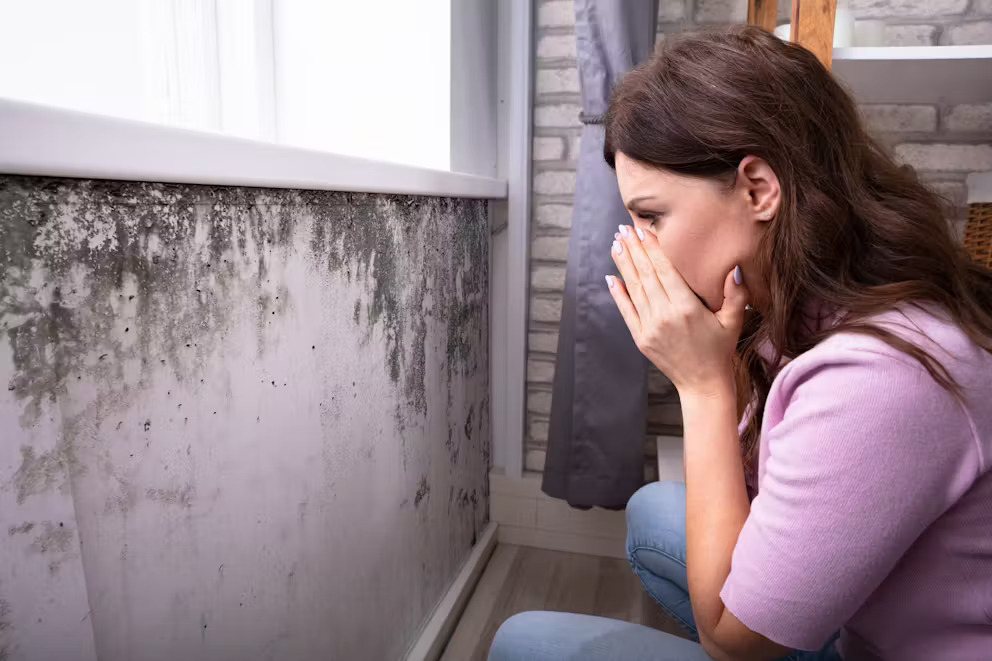Introduction
Welcome to the hidden world of fungi that’s not so fun—a world where mold toxicity lurks in the damp corners of our homes, waiting to unleash a host of unwanted health risks. It’s like an unwelcome house guest that can overstays its welcome, affecting our health and disrupting our peace of mind. But fret not, dear readers, because knowledge is power, and this article is your trusty sword and shield. We’ll be diving into the nitty-gritty of mold toxicity, decoding the clandestine signs it leaves behind, and arming you with the wisdom to protect your well-being.
Whether it’s the sinister black spots on your shower curtain or the musty odor from the basement, these could be more than just a cleaning checklist item—they could be red flags waving frantically for attention. By the end of this enlightening journey, you’ll be well-versed in the art of mold detection and prevention, ready to safeguard your castle from the fungal invasion. So, let’s embark on this educational adventure to ensure that the air you breathe is as pure as your intentions for reading this article.
Understanding Mold Toxicity
Imagine mold toxicity as an invisible beast, lurking in damp corners of your home, waiting to pounce on your health with a cloak of spores. This beast isn’t a creature of myth; it’s a very real concern. When mold invades, it releases spores into the air—tiny trespassers that can wreak havoc on our bodies. The effects of mold toxicity can be as mild as a sneeze or as severe as a full-blown chronic illness, depending on the individual’s sensitivity and the duration of exposure.
Common culprits like Aspergillus, Cladosporium, and the infamous Stachybotrys chartarum—known as black mold—can be particularly nasty, with some types producing mycotoxins. These are poisonous substances that can lead to an array of health concerns. Understanding the enemy is the first step in guarding against it. Mold toxicity isn’t a one-size-fits-all problem; it varies from person to person, with some individuals having a genetic predisposition that makes them more susceptible to these fungal foes.
It’s not just about sneezing or coughing; mold can be a master of disguise. The variety of health risks associated with mold toxicity means staying informed is your shield and knowledge, your sword in the battle for well-being. Let’s arm ourselves with awareness and keep our homes—and bodies—a fortress against this unseen adversary.
Warning Signs of Mold Toxicity
When mold throws a sneaky party in your home, it’s not just the unsightly spots you need to worry about. This uninvited guest can bring a suitcase full of health risks. If you’re feeling under the weather and can’t pinpoint why, consider if mold toxicity is whispering “gotcha!” from behind the wallpaper. Here’s a rundown of signals that might indicate mold’s murky presence:
- Respiratory Issues: If you’re coughing more than a stand-up comedian at an open mic night, or you find yourself short of breath without having run a marathon, mold might be the culprit.
- Allergies: New or worsening allergies can be a red flag. When your immune system suddenly acts like it’s auditioning for a drama series, thank mold spores.
- Neurological Symptoms: Experiencing a brain fog thicker than pea soup? Memory feeling like a sieve? These could be signs that mold is affecting more than just your walls.
These symptoms, coupled with scientific evidence and expert input, suggest that mold toxicity is no joke. If these signs are ringing any bells, it might be time to play detective and sniff out mold’s hiding spots.
Identifying and Addressing Mold Growth
Spotting mold can feel like finding a needle in a haystack – if the haystack were your cozy living room. But fear not! You can identify mold growth in your home by becoming a detective and searching for visible signs, such as discolored walls or ceiling tiles, and tuning into the tell-tale musty odors that mold loves to emit. Trust your senses; they’re the first line of defense against these sneaky spores.
- Check for Discoloration: Mold often presents as spots or patches in various hues – don’t let these seemingly innocent spots fool you; they’re a sign of unwelcome guests.
- Sniff Around: A musty smell is as good as a signed confession from mold. It loves to announce its presence with its distinctive dank odor.
- Inspect for Damage: Water damage on surfaces can be a VIP pass for mold growth. Keep an eye out for peeling, cracking, or warping – these could be the stage for mold’s performance.
Once you’ve caught mold red-handed, it’s time to don your superhero cape. Addressing mold growth promptly is crucial. Begin by drying out the affected area and cleaning small spots with a mild detergent. However, for a mold infestation that’s more like a block party than a private gathering, it might be time to call in the mold remediation professionals. And remember, the best attack is a good defense – to prevent mold’s encore, solve any moisture problems swiftly, and ensure your home is well-ventilated.
The Connection Between Mold and Health Issues
If mold were a character in a horror movie, it would be the sneaky villain that invades homes and wreaks havoc on its occupants’ health. The insidious nature of mold toxicity can often go unnoticed until the plot thickens with an array of health issues. But this isn’t fiction; the connection between mold exposure and health problems is well-documented and can star in the unfortunate reality of many people’s lives.
For instance, the spores of this uninvited guest can take up residence in your respiratory system, leading to symptoms reminiscent of a never-ending cold or, in more serious cases, conditions such as asthma and respiratory infections. Allergies flare up as if you’re perpetually in the midst of spring, no matter the season. But it doesn’t stop there; mold toxicity can also assume the role of a neurological gremlin, inducing headaches, dizziness, and other cognitive disturbances that could have you questioning your sanity.
Living with mold is like having a toxic roommate; it may irritate preexisting conditions and even invite new health problems. It’s important to kick this roommate out before the lease on your health is up for good. Understanding and addressing mold toxicity is essential for maintaining a healthy home environment and protecting your ongoing well-being from these covert operatives.
Protecting Yourself from Mold
Like a silent ninja, mold creeps into our homes, often undetected until it’s too late. However, you don’t need to don a face mask and wield weapons to combat this silent foe. With a few proactive steps, you can fortify your home against mold’s stealthy invasion. Preventing mold growth is not just about cleanliness; it’s about creating an environment where mold spores can’t throw a party. Start with proper ventilation; ensure your bathrooms, kitchen, and laundry room are well-aerated to discourage any mold soirees.
- Humidity is mold’s best friend, so keep it at bay by using dehumidifiers and air conditioners, especially during those sticky, humid months.
- A vigilant eye for water damage is key—fix leaks ASAP to avoid giving mold a cozy, damp spot to settle down.
- Regular maintenance, such as cleaning gutters and checking for condensation, can go a long way in keeping the air in your castle fresh and mold-free.
If you find yourself in high-risk environments where mold might be auditioning for a habitat role, be extra cautious. Sealing windows, using mold-resistant products, and keeping indoor plants under control can keep your living space from turning into a mold metropolis. Stay vigilant, stay dry, and stay mold-free; your well-being deserves a home that’s as clean and healthy as a whistle!
Conclusion
Lurking in the damp shadows of our homes, mold toxicity is an uninvited guest that can wreak havoc on our health. We’ve journeyed through the murky waters of mold-related dangers, deciphered the warning signs, and equipped ourselves with the knowledge to combat this silent adversary. Remember, your fortress of solitude—your home—should be a sanctuary, not a petri dish for microbial marauders.
Don’t let the sneaky spores of mold take root; be vigilant and proactive. If the musty breath of mold whispers from your walls, spring into action. Recognize the signs, respond swiftly to infestations, and reclaim your health and peace of mind. For those seeking further intel on mold’s treacherous tactics, numerous resources await your perusal. Stand guard, dear reader, and protect the well-being of your abode—and yourself.






